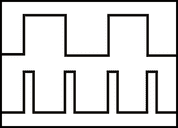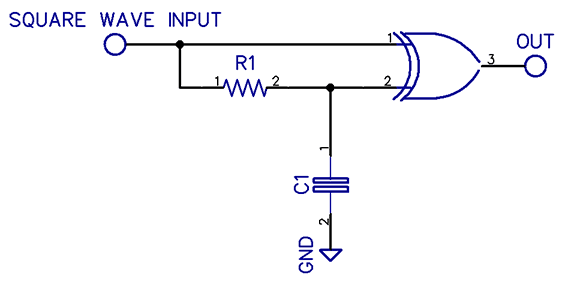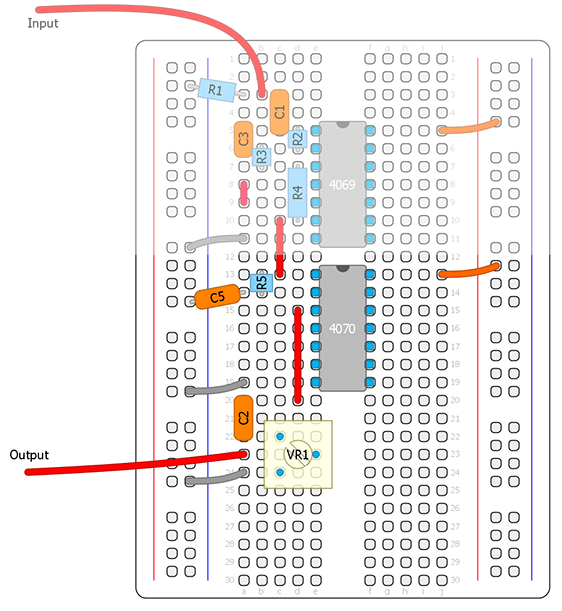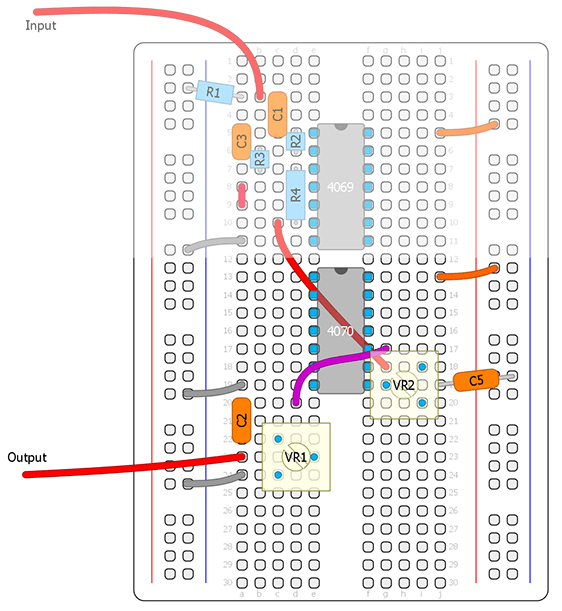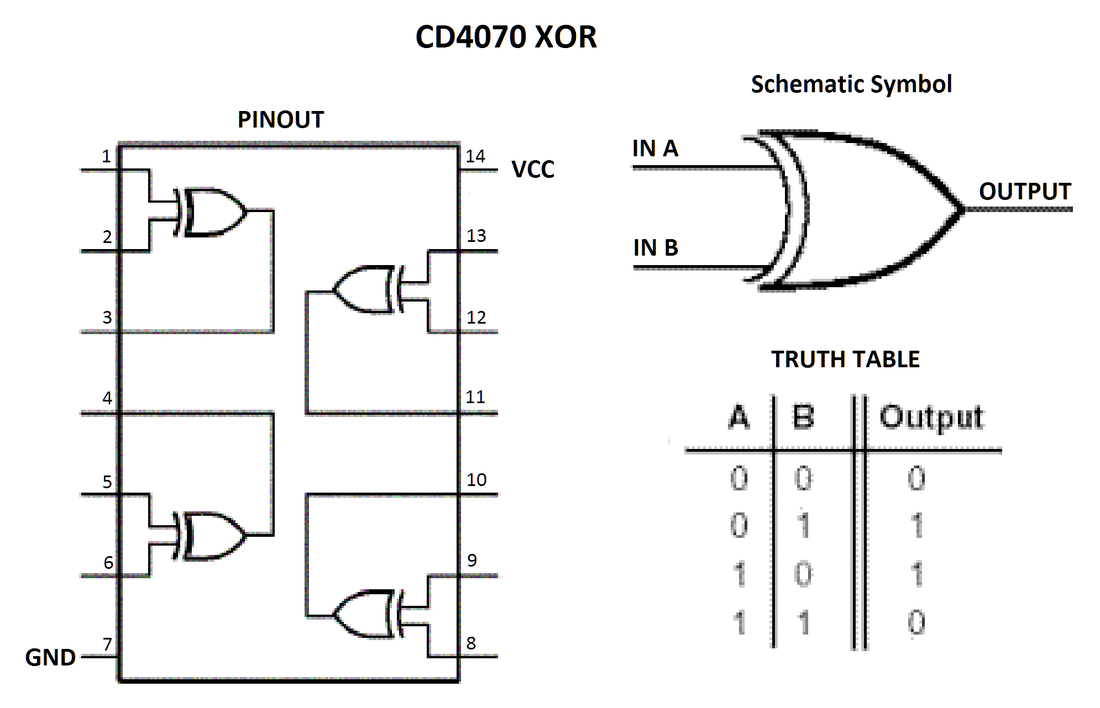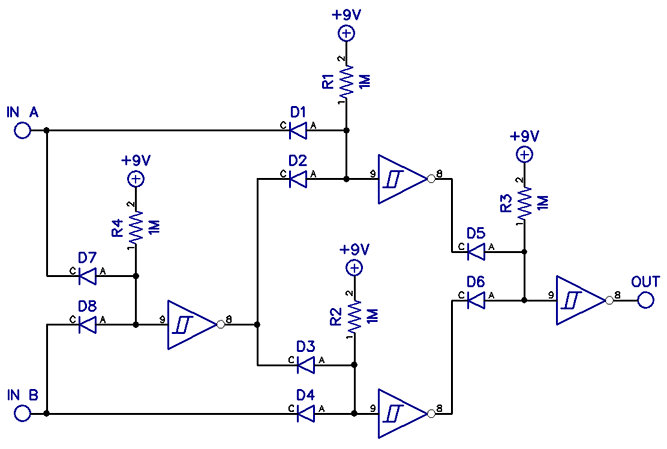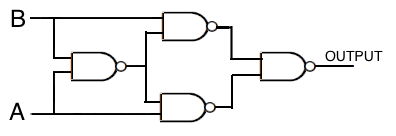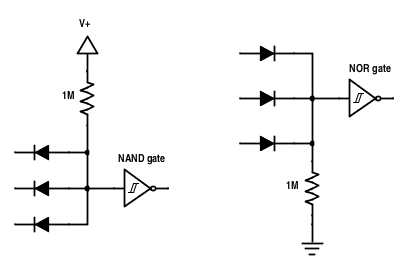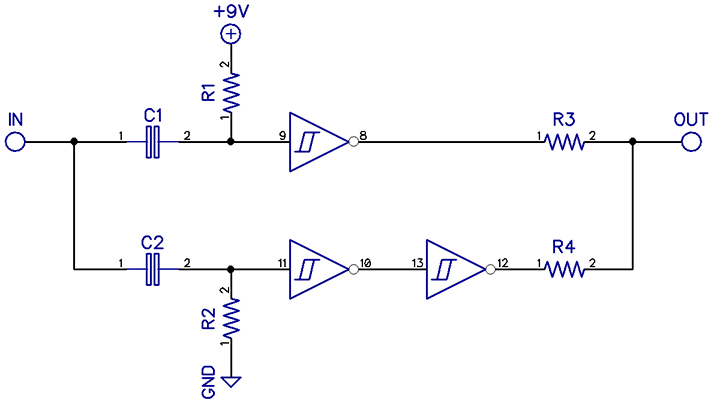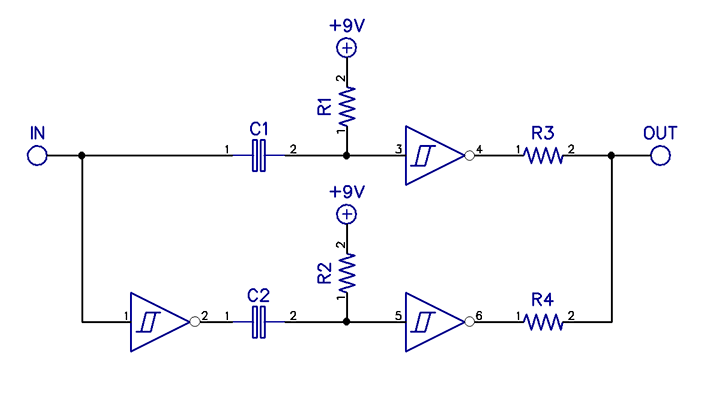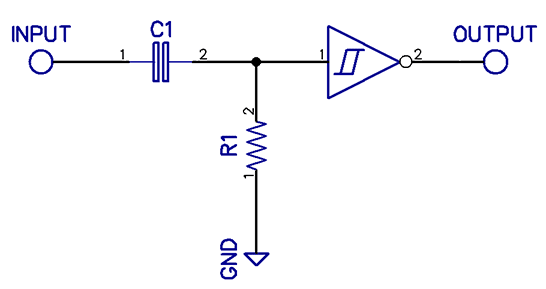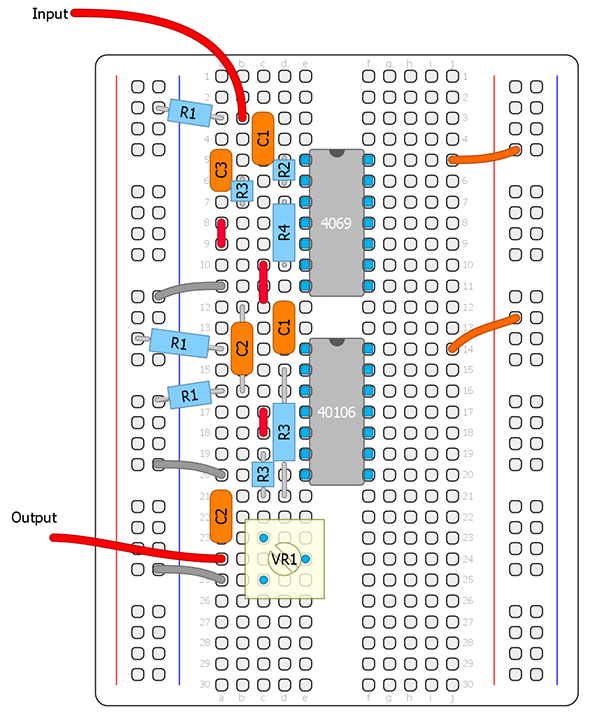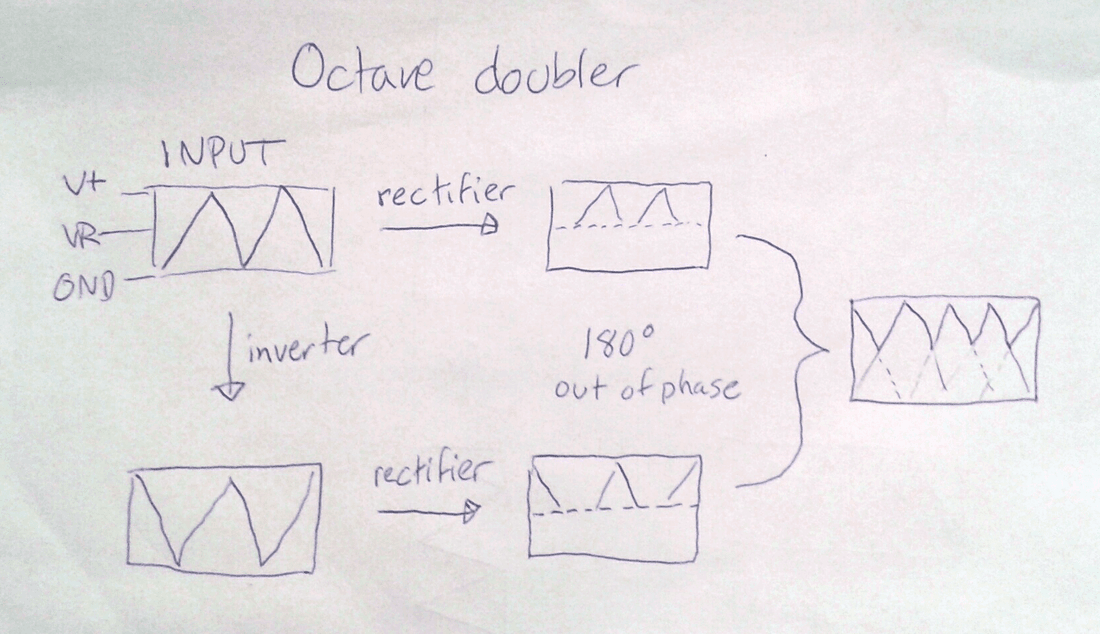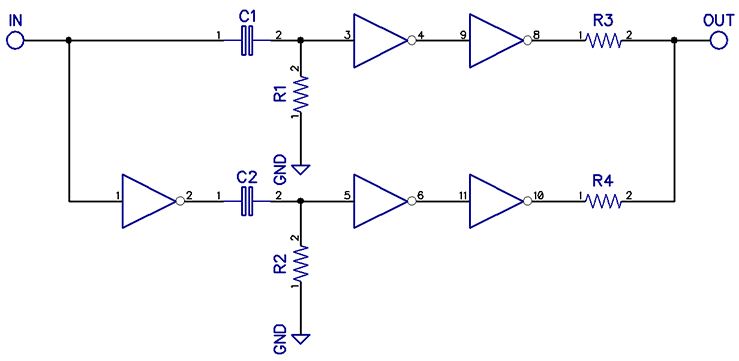|
It's time for another part of the CMOS Workshop series. :) This part will be about octave up circuits (aka frequency doublers).
1. XOR gate (CD4070)The CD4070 is ideal for this purpose and require very little extra components. XOR logic: For the output to go high, both inputs needs to be at a different state By connecting our square wave to both inputs and delaying one of the inputs slightly, there will be a brief moment when the inputs are in different states. At this moment the output will go high, thus creating a short pulse wave at the output every time the input goes high or low. The delay is made out of a simple RC filter. It will round out the square wave, so that it takes alittle longer for each transition to cross the switching threshold of the logic gate. Lets try this circuit on the breadboard. Remember to always disable all the unused inputs. Here we can play around with different values for the RC filter. It will change the width of the pulses and the character of the sound. For C5 (C1 on the schematic) try a 4.7nF - 47nF value. For R5 (R1 on the schematic) try 10K-500K. In the 1B example I've replaced R5 with a trimmer and for convenience I chose another gate. The top greyed out part is the gainstage and schmitt trigger front end from the CMOS Workshop part 2 so you will have to check the other component values there. Notice that the pulse width can get too narrow or wide for the octave up effect to work. As a rule of thumb you don't want the pulses to be too narrow because it will sound bad, and you don't want the pulses too wide because then it won't track properly on the entire fretboard.
The B schematic is just another way of doing the same thing. I just moved the inverter to the input insted.
4. NOT gate (CD4069)There's one last version I would like to include in the article, similar to the schmitt trigger one, except that it uses regular inverters.
That's all I had for this part.
I've given some examples of how to make frequency doublers with edge detector circuits using at least 5 different CMOS chips (if you count the schmitt trigger variations). Which one you choose will probably depend on the rest of the circuit you are making. Maybe you already need a schmitt trigger chip in your circuit to do other functions, then example nr 2 is better because you will still have 3 gates left over (if using a CD40106) insted of adding an xor chip to only do one thing. Personally I prefer to keep the chip count as low as possible even if it adds more components. It usually takes less time to solder a few extra resistors and caps then having to solder another 14 or 16 pin chip (which also takes more space on the PCB). It's all about convenience. As I've shown, there's usually several ways to do the same thing when working with CMOS. Remember that we're dealing with 1's and 0's, so no matter which chip/method you use it will basically sound the same (if the pulse width is equal). Same goes for the octave down methods in the previous part. However, there is a clearly sounding difference between edge trigger or rectifier doublers, or PLL VCO frequency doublers (as used in the Into the Unknown guitar synth) which I will cover in a later part. But next part will be about oscillators and LFO's. We will breadboard some fun stuff, as I've promised :) UPDATED 2023-10-31: Some minor spelling corrections.
18 Comments
1/8/2017 03:34:10 pm
Some additional info on how the pulse generator in example 2 works: "With no changes occuring on the input, the 1M resistor to ground holds the input low and thus the output high. When a low-to-high logic transition is applied at the input, the front of the voltage step is capacitively coupled through the C1 and dropped onto R1 as a narrow low-to-high pulse. The output of the schmitt trigger pulses low in response and then returns high due to R1 holding the input at ground." Explanation quoted from Ray Wilson's book "Make: Analog Synthesizers" (with a minor tweak to fit the schematic shown here)
Reply
Sergio
1/13/2017 10:22:00 am
Very interesting. Thanks a lot.
Reply
2/9/2022 01:04:14 am
The entirety stays so proper with them! I'm glad that I selected them for my work! First-rate!
Reply
Hej! Jösses vilken trevlig läsning! Jag har byggt några pedaler på stripboard (fuzz/od/dist) från den eminenta sidan tagboardeffects.com, men haft lite svårt att hitta bra info om hur sakerna fungerar. Det finns väldigt mycket om elektronik, men jag har känt att det varit lite knepigt att knyta den informationen till audio, och att audio är ac har rört till det lite för mig.
Reply
1/15/2017 03:59:36 pm
Hej Staffan!
Reply
thehallofshields
1/16/2018 09:38:12 pm
Fredrik, how about a ::Part 5: Getting Started with the PLL::
Reply
1/18/2018 04:34:52 am
Yes, i've been about doing a part about the PLL. Maybe when I have time (always the issue) I'll try to write up something. :)
Reply
Jon B
3/11/2018 08:45:58 pm
These are super helpful! I've breadboarded a couple circuits based on some of this and they sound so cool. Thanks man!
Reply
Reece
4/13/2019 05:42:52 am
Just read through all these articles and they are so handy. I have breadboarded the octave down and up and was wondering how I would go about outputting them both and the original square wave from the 4069?
Reply
4/17/2019 03:32:52 am
Hi Reece,
Reply
Tadashi Takahashi
3/10/2020 04:19:50 pm
Hello. I have a question about Schmitt Trigger octave up with possible mods in your article. What lfo circuit should be connected to the lfo input? I want you to tell me specifically. I tried various things myself, but I could not do it well.
Reply
3/11/2020 06:31:57 am
Hi,
Reply
5/5/2020 09:38:11 pm
Awesome articles! I wanted to ask you this kind of questions, but I thought it could bother you. So instead I just looked up the chips of you use in your pedals in google to study different circuits, and looking up in google I found this article that you made explaining everything in detail applied to gutiar pedals. Funny thing. I am really waiting for the PLL article. We don't deserve you.
Reply
Cole U McCray
5/9/2020 09:59:01 pm
I highly recommend the book by Nic Collins titled: "Handmade Electronic Music" a free .pdf can be found by searching. ..
Reply
Steve Fdez
11/16/2020 05:07:02 pm
Hi! Just wanna say WOW!! Great articles! I been enjoying all of them and of course learning a lot of how CMOS are really working. I hope you'll get the time/energy to continue making more content of this kind.
Reply
11/18/2020 03:47:18 am
Hi Steve,
Reply
kira
12/15/2020 08:09:59 pm
hi ive been messin witch chips for years cant believe it took me so long to find your content!! would be great if you made an article on oscillators. i know how to make them work but your insight on them would probably be great. thanls!
Reply
Hi Fredrik,
Reply
Leave a Reply. |

